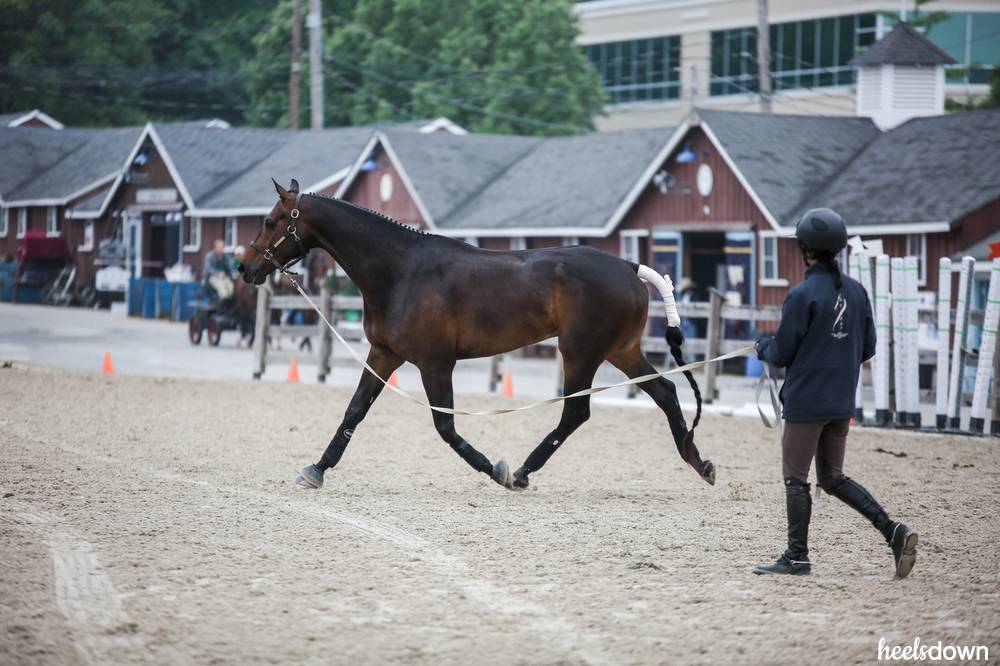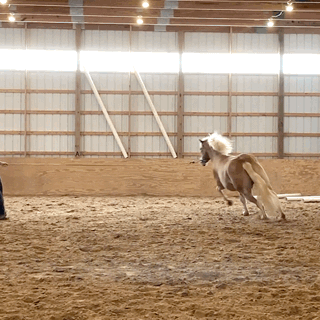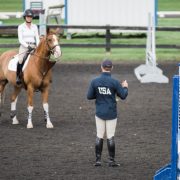How to Build Hind End & Confidence From the Ground

By Ellie Woznica
When it comes to being collected and using their bodies to their fullest potential, some horses are more hesitant than others. Some simply just don’t know how.
There are lunging systems to encourage a horse to engage their hind end, but what if you can’t afford one of those systems or don’t feel comfortable using it on your horse? Here are some ways that I teach a horse to use themselves from the ground.
I like to use these techniques when starting horses that seem to have some resistance to the canter and/or lope. First, it is important to rule out any physical pain the horse may be experiencing. Are their feet sore? Does the saddle fit? After you have confirmed the horse is pain-free, you might be left wondering why your horse does not want to go into the canter when you are on their backs, but when you see them running around in the pasture, they’re just fine. The answer is simpler than you think—it’s harder to canter with the weight of a rider on their backs and the added movement is throwing them off balance. This can be especially intimidating for younger horses who have never cantered under saddle.
To help the horse understand what is being asked of them, I work for weeks with voice commands (cluck to trot and kiss to canter) to the point where I can control the horse’s transitions and pace without the need of the whip or pulling back on the line. Having the ability to speed a horse up and slow a horse down without pulling on the lunge line is an important safety step to make sure to master before adding obstacles into the mix.

Trot Poles
I like to first introduce the horse to trot poles set up in the corner of the arena. I set three poles in a fan shape with the center about two feet apart. The exact spacing will depend on the horse’s size and stride length, but I like to use the fan shape so that after they trot through the poles I can move the horse further out in the lunge line for a bigger step or pull them in for a smaller one.

Raised Cavaletti
Once the horse is completely comfortable with the trot poles, I will introduce a small cavaletti. Again, I place this against the side of the arena so that I can lunge on a smaller circle and push them out when I feel they have the right pace for the obstacle. When first starting the horse over the cavaletti, try to be strategic about where you place it. Make sure the horse has enough time before and after the jump to work on their straightness.
Creating trot poles and small jumps for the horse on the lunge line gives them the space and time to figure out their own footing and movement without the interference of a rider. I find these activities great, not only for building up a horse’s hind end, but also building their self-confidence, which ultimately makes the rider’s job easier down the road. A horse that is strong and confident in himself makes for an amazing partner.


